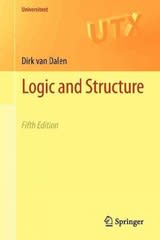helppp pooo
FIRST SUMMATIVE TEST IN STATISTICS AND PROBABILITY FOURTH QUARTER I. MULTIPLE CHOICE: Select and encircle the letter of the correct answer. 1. What type of decision is being committed if someone accepted a false hypothesis? A. Type I Error C. Correct Decision A hoigiodel B. Type II Error D. Correct Decision B 2. This refers to an intelligent guess about a population parameter. A. Decision B. Hypothesis C. Rejection D. Significance 3. How will the area of the rejection region for a two-tailed test compare to area of the rejection of the corresponding one-tailed test with the same onl brix significance level? ved of A. The area will be smaller C. The area will be the same -onal I sqYT B. The area will be larger C. Cannot be determined 4. It is the starting point of the investigation in hypothesis testing. A. Alpha Level C. Rejection Region B. Null Hypothesis D. Alternative Hypothesis 5. How will the magnitude of the critical value for a two-tailed test compare to the critical value of the corresponding one-tailed test with the same significance level? A. The two-tailed critical value will be smaller B. The values will be the same C. The two-tailed critical value will be larger eno to belied-owl 101 all60 6. The calculations in determining rejection region can be graphically Slamse A . represented by using A. Bar Graph C. Normal Curve . sonsJe sigme srid B. Straight Line BA neswted I'd 90 D. Cartesian Plane :OH 7. What is the symbol that can be used to denote the probability of committing Correct Decision A? A. dogs mish B. Best of Jim pas C. 1,509 or 10 D. 1 - B S19VS 8. Which of these is a correct alternative hypothesis for a two-tailed test? 1012 A. Ha: H # 7 B. Ha: M 7 . a ela nouisivsb 9. Why is a two-tailed test sometimes referred to as the non-directional hypothesis? SH A. Because this test only verifies if there is a statistically significant difference between groups or not. B. Because researchers are unsure of what to do with their data. C. Because this test determines if there is a statistically significant difference between groups in either direction. D. Because two-tailed tests are conducted when the results are both positive and negative. SH







